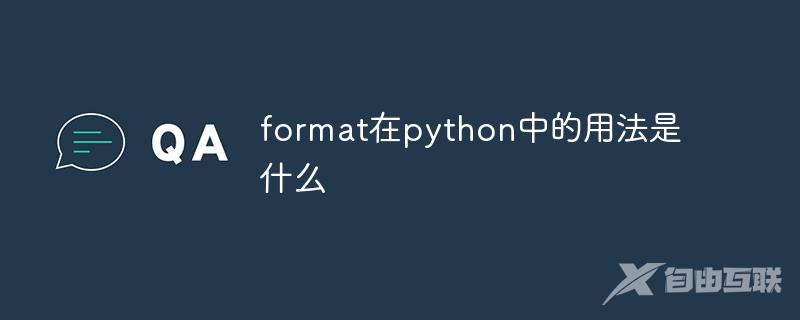format在python中的用法是基本用法、指定位置、指定变量名、格式化数字、格式化日期和时间。

Format函数是Python中内置的一种字符串格式化方法。它允许我们在字符串中插入变量和其他值,并将它们格式化为特定的形式。使用format函数,可以在代码中更加灵活和易读地处理字符串拼接和格式化的需求。
格式化字符串的基本语法是通过{}作为占位符,然后通过format函数将实际的变量或值传递给占位符。格式化的结果将替换掉占位符,从而生成新的字符串。
下面是format函数的一些常见用法:
1. 基本用法:
format函数的基本用法是将变量或者值放入{}占位符中,例如:
name = "Alice"
age = 25
print("My name is {} and I am {} years old.".format(name, age))
输出结果为:My name is Alice and I am 25 years old.
2. 指定位置:
通过指定位置索引,可以按照固定的顺序来替换占位符。例如:
name = "Bob"
age = 30
print("My name is {1} and I am {0} years old.".format(age, name))
输出结果为:My name is Bob and I am 30 years old.
3. 指定变量名:
如果占位符很多,可以通过指定变量名的方式来替换,这样可以使代码更加可读和易于维护。例如:
name = "Charlie"
age = 35
print("My name is {name} and I am {age} years old.".format(name=name, age=age))
输出结果为:My name is Charlie and I am 35 years old.
4. 格式化数字:
format函数可以用于格式化数字的显示方式,例如:
num = 3.14159
print("The value of pi is approximately {:.2f}.".format(num))
输出结果为:The value of pi is approximately 3.14.
5. 格式化日期和时间:
format函数还可以用于格式化日期和时间的显示方式,例如:
from datetime import datetime
now = datetime.now()
print("Current date and time: {:%Y-%m-%d %H:%M:%S}".format(now))
输出结果为:Current date and time: 2022-01-01 12:00:00
总结:
format函数是Python中一种强大的字符串格式化方法,可以用于替换占位符,并以特定的形式来显示变量和其他值。通过指定位置、变量名、格式化数字和日期等方式,可以实现更加灵活和易读的字符串操作。在实际开发中,format函数是一个非常有用的工具,可以提高代码的可读性和维护性 。
